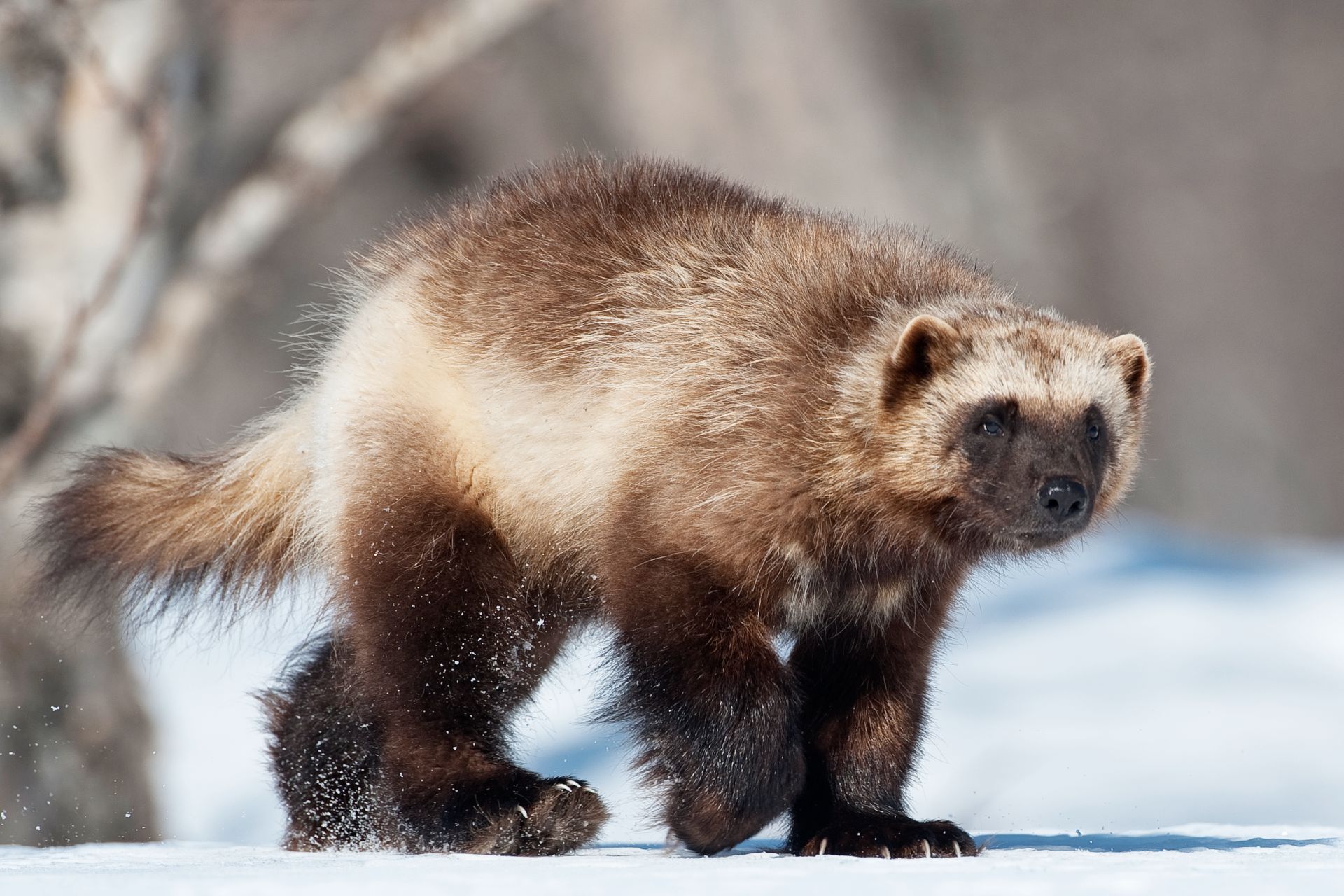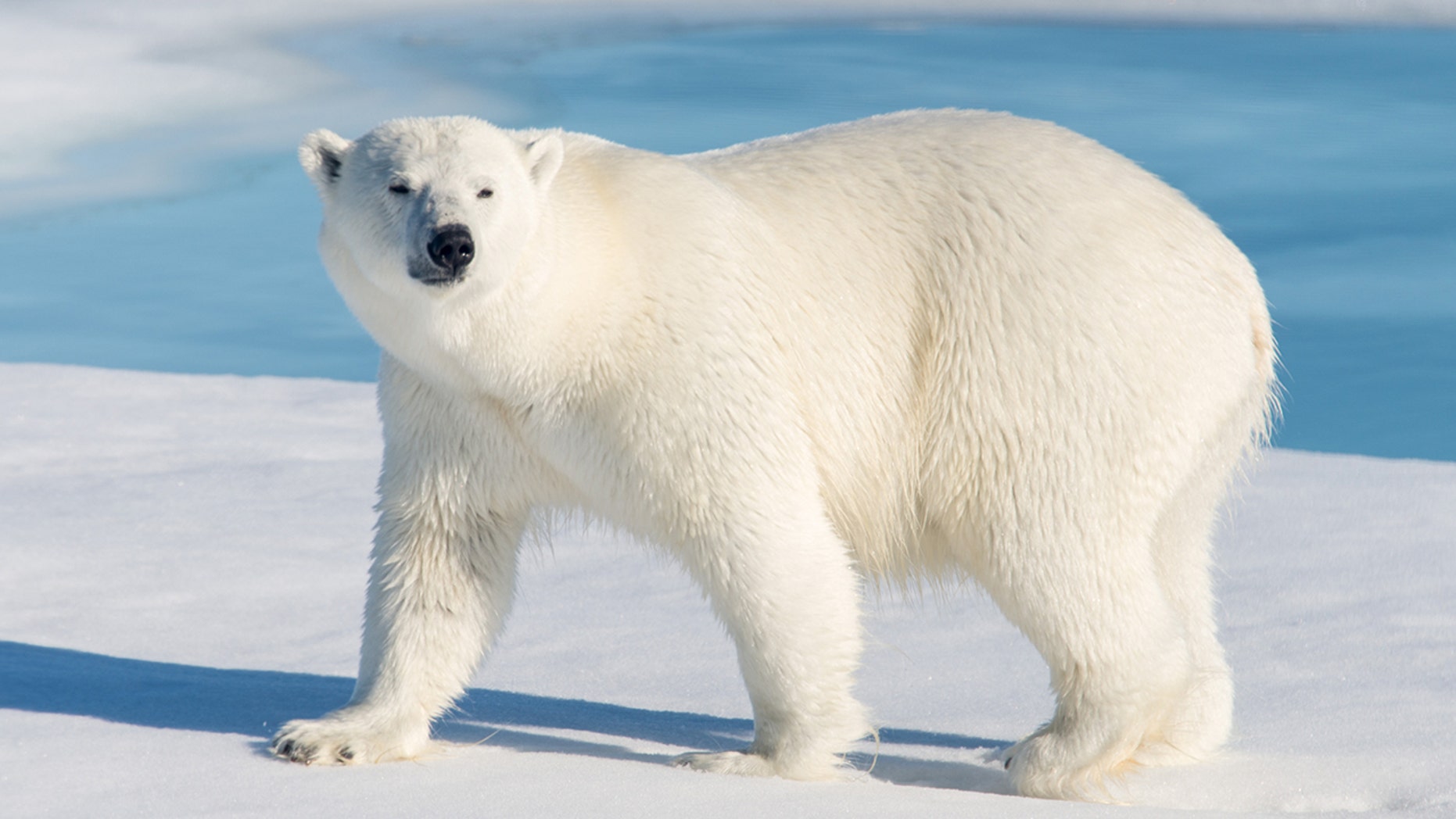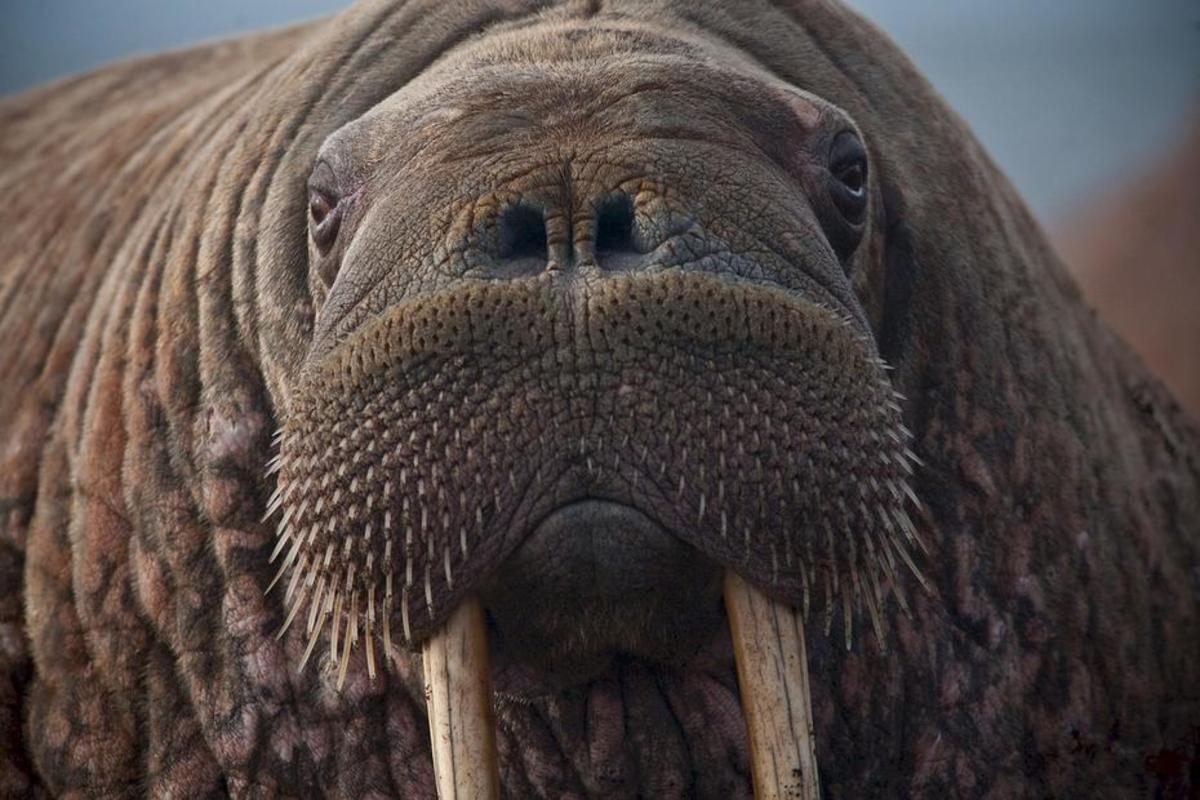 |
| Figure 1: A polar bear ambushing a no doubt terrified seal |
If one of every animal in the arctic tundra fought each other, who would win?
As many of the animals participating in this fight are either herbivores or primarily eat insects and crustaceans, there are a lot of contenders that can be ruled out pretty easily as a clear loser. The Arctic hare, horned puffin, ringed seal, snowshoe hare, and tundra shrew are all examples of animals that stand no chance against the larger predators of the arctic. While many of these animals are fast can could easily outrun a predator such as a polar bear or wolf, they stand no chance in this fight because of their diet and how that has effected their evolutionary path. Snowshoe hares for example, are herbivores, and as such they have no claws, no powerful bite, no substantial attack mechanism whatsoever. They do however, have especially large feet used to traverse the snowy arctic floor and outrun predators that they would other words be outmatched by. Because there can only be one survivor in this scenario though, running away isn't a winning tactic.
Animals that are unlikely to win:
With the obvious losing contestants out of the way, we can get into the animals that are still going to lose, but are interesting to talk about nonetheless.
Contenders for first place:
A ridiculous question to be sure, but one I find rather intriguing nevertheless. Evolution has always been my favorite part of biology, and more specifically what traits and features animals evolve to survive in their respective habitats, so when this question first popped into my mind I could not help but find the answer. To answer this extremely pressing issue, I did some research on each species indigenous to the arctic tundra biome and what traits they have evolved over time to survive in their natural habit.
Before I can get into how these animals stack up though, I must put forth a few rules:
First, there will be no aquatic creatures participating in this fight, as to get to them the non-aquatic creatures would have to go into the water, most likely putting themselves at a serious disadvantage (so sorry to all you orca and narwhal fans). I will however, be including animals that can survive on both land and water such as seals. Second, I will assume that all the animals in this scenario understand that there can only be one survivor, and they are willing to kill to survive; this way animals are able to attack others outside of their typical diet. Third, the setting will be a mostly snowy flatland with patches of dirt and small hills, to provide a fairly balanced playing field, while still giving the arctic animals the ability to use the familiar territory to their advantage. Fourth, each animal will be a fully grown adult, as to keep things fair, and there will only be one of each animal.
And with the rules out of the way we can finally get into how these animals would stack up in a battle royale type scenario. Let the fight begin!
Animals that would die right off the bat:
 |
| Figure 2: A snowshoe hare |
Animals that are unlikely to win:
With the obvious losing contestants out of the way, we can get into the animals that are still going to lose, but are interesting to talk about nonetheless.
 |
| Figure 3: A wolverine |
Wolverines have wide, webbed feet to help them cross deep snow without being slowed, and sharp claws to kill their prey; Though a wolverine's most powerful asset is its aggressive nature. Wolverines are some of the most aggressive creatures in the arctic, and often use this to scare off larger predators from taking their food. However scary they may be though, it is mostly just for show. Wolverines are much smaller and weaker than the top predators in the arctic, so to compensate for this they have developed an aggressive nature, allowing them to take on animals much larger than themselves. But while they are able to hold their own against bears and moose, they are not strong enough to actually take them down. Wolverines have been known to kill injured moose and deer, but if any healthy predator were to hold their ground, against the wolverine, it would be unlikely to win that fight.
Being smaller and bulkier than the average gray wolf, arctic wolves are fairly formidable foes capable of taking down larger animals such as caribou and muskox. However, their greatest strength is in numbers, and only one of them is allowed to fight. Arctic wolves typically hunt in packs of three to four, this way they are able to surround and overwhelm their prey, but on their own they are too weak to do a considerable amount of damage before taking a fatal blow.
 |
| Figure 4: An arctic wolf |
Now we get into the animals that actually have a considerable chance of winning. These animals are not only strong enough to kill most other animals that pose a threat to them, but are bulky enough to take few hits and keep going.
 |
| Figure 5: A muskox |
Despite being herbivores as many of the animals in the "will immediately die" category were, muskoxen are incredibly powerful and resilient. Their hooves are strong enough to break through solid ice, and when threatened they can charge at a target with incredible force. However like the arctic wolf, their best defense is their ability to protect one another by traveling in groups, and on top of that, they are typically very slow, easily outpaced by most other arctic animals. And for these reasons, I do not believe they could outmatch the other two animals to come.
 |
| Figure 6: A polar bear |
Polar bears were probably the first animal you thought of when you first started reading this post, and for good reason. With powerful claws and a bite force of 1200 pounds per square inch, polar bears seem to be the clear winner in this scenario. However, they do have some glaring flaws. Their top speed is about 18 mph, but they tire quickly due to their insulating fur (although without it they would in the arctic's low temperatures). Furthermore they are significantly less powerful against animals with a body mass equal to or greater than their's.
The most likely winner of The Arctic Animal Rumble 2019™:
 |
| Figure 7: A walrus |
Yes, the most powerful animal in the arctic isn't a giant woolly ox, or a killer bear, it's two tons of blubber with big teeth. Walrus tusks are extremely deadly, and just one or two hits can be enough to seriously injure any animal, and in addition to keeping them warm in the cold arctic terrain, their blubber is extremely tough, making even swipes from a polar bear laughably futile. And while they are not particularly fast, they are capable of short bursts of movement upwards of 20 mph, though with their thick blubber they have no need to move, all they would need to do to win is sit around and bite any animal that dare come close enough. And that is why walrus's are the strongest animal in the arctic tundra.
This is such an amazing post and should be played out on a bigger scale because the concept is so cool. I'm sad my second favorite animal the wolf didn't survive. Great job!
ReplyDeleteI loved this concept! SO creative and thought out. Walruses deserve more credit.
ReplyDelete